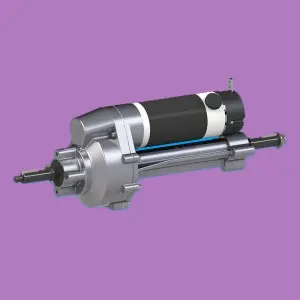The transaxle is a key component in the vehicle transmission system, integrating the functions of the transmission and axle. It is responsible for transmitting power from the engine to the wheels, ensuring smooth gear changes and efficient torque distribution. Among the various types of transaxles, the continuously variable transmission (CVT) transaxle stands out for its unique design. In this blog, we’ll delve into the complexities of rebuilding a CVT transaxle and explore the challenges associated with this complex task.
Learn about CVT transaxles:
A CVT transaxle uses a pulley system and a steel belt or chain to smoothly change transmission ratios without the need for any discrete gear stages. This provides infinite gear ratios, resulting in improved fuel efficiency and seamless acceleration. However, the complexity of the CVT transaxle makes it a challenging component that requires specialized knowledge, expertise, and experience to rebuild.
1. Comprehensive understanding of CVT technology:
Rebuilding a CVT transaxle requires a thorough understanding of the complex technology behind it. Unlike a traditional automatic transmission, a CVT transaxle does not have mechanical gears. Instead, it relies on a combination of hydraulic systems, electronic sensors, and computer control modules. Without a full understanding of these components and how they interact, the reconstruction process will be very difficult.
2. Special tools and equipment:
Successfully rebuilding a CVT transaxle requires the use of special tools and equipment. These include diagnostic scanners, transmission flushers, torque wrenches, pulley alignment tools and more. Additionally, CVT-specific parts and repair kits are often required but may not be readily available, making the rebuilding process more complex.
3. Rich technical knowledge:
Rebuilding a CVT transaxle is not a task for the hobbyist or average mechanic. It requires an in-depth understanding of the specific transaxle model, its unique engineering, and associated diagnostic procedures. The complexity and ever-evolving nature of CVT technology means keeping up with the latest advancements is critical to ensuring accurate and effective reconstruction.
4. Time-consuming process:
Rebuilding a CVT transaxle is a time-consuming job. Meticulous attention to detail is required due to the intricate steps involved in disassembly, cleaning, inspection and reassembly. Additionally, special programming and calibration may be required to synchronize the CVT transaxle with the vehicle’s electronic control module. Rushing the process can lead to errors or poor performance, so patience and precision are required.
There is no denying that rebuilding a CVT transaxle is a challenging task that requires a high level of expertise, special tools and extensive technical knowledge. Due to its unique design and complex functionality, it is recommended to leave this job to professionals who specialize in CVT transaxles. By entrusting your vehicle to an experienced technician, you can ensure that the proper modifications are made to maintain performance, extend the life of the transaxle, and optimize the overall efficiency of your vehicle’s driveline.
Post time: Nov-17-2023


